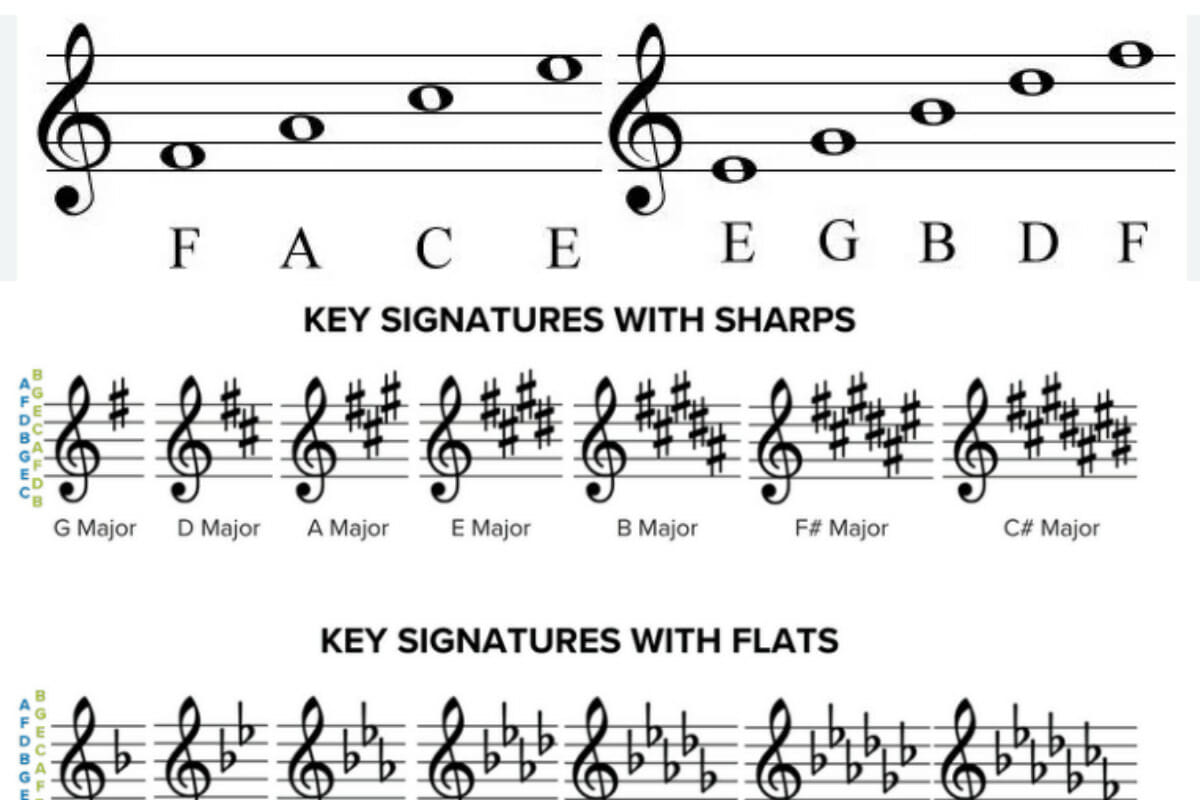How to Read Sheet Music for Piano: A Detailed Guide

Any aspiring pianist must master the art of reading sheet music. The universal language of music is sheet music, which enables artists to precisely comprehend and perform other people’s creations. The art of reading piano sheet music may be mastered, despite the fact that it might initially seem difficult. We’ll walk you through the procedure in great detail in this comprehensive guide to help you master the art of reading sheet music.
Understanding the Staff and Clefs
Two staves, sometimes known as “staffs,” are piled on top of one another to form piano sheet music. Five lines and four spaces make up each staff, creating a grid for musical notes. Different pitches are represented by these lines and gaps. The treble clef is normally used by the top staff, whereas the bass clef is used by the bottom staff.

The bass clef (also known as the F clef) depicts lower-pitched notes played with the left hand, while the treble clef (also known as the G clef) signifies higher-pitched notes played with the right hand. The second line from the bottom is where the treble clef starts, curving around the line that corresponds to the G above middle C. The bass clef starts on the second line from the top and curls around the line that represents the F below middle C.


Knowing the Notes and Their Durations
The basic components of sheet music that indicate musical tones are notes. In music, there are seven fundamental notes: A, B, C, D, E, F, and G. The first seven letters of the alphabet are referenced in the names of these notes. The pitch to be played is determined by a note’s location on the staff.
The length of time you should hold a key on a piano depends on the note’s duration. Whole notes, half notes, quarter notes, eighth notes, and sixteenth notes are the most prevalent note lengths. The holding period for whole notes is four beats, half notes two beats, quarter notes one beat, eighth notes half a beat, and sixteenth notes quarter of a beat.

Grasping Note Placement and Ledger Lines

Depending on the pitch of the note, it may not always fit within the five lines and four spaces of the staff. In such cases, ledger lines are used to extend the staff’s range. These short lines are placed above or below the staff and indicate the additional pitches of the notes. It’s essential to pay attention to note placement relative to the clef, as the same note on different ledger lines can represent different pitches.
Understanding Key Signatures and Time Signatures
Key signatures indicate the key in which a piece is written and are found at the beginning of each staff. Key signatures consist of sharps (#) or flats (♭) and affect the pitch of certain notes throughout the piece. Familiarizing yourself with key signatures will help you anticipate the notes that are altered in a piece.
Time signatures, on the other hand, indicate the rhythmic structure of the music. The time signature consists of two numbers, one on top of the other. The top number denotes the number of beats per measure, while the bottom number indicates the note value that represents one beat.
Practicing Sight-Reading

Sight-reading is the ability to play a piece of music for the first time, just by reading the sheet music. It’s a valuable skill for any musician and can be developed through consistent practice. Start with simple pieces and gradually progress to more complex ones as you gain confidence in reading sheet music.
To play music, you need to know its meter, the beat you use when dancing, clapping, or tapping your foot along with a song. When reading music, the meter is presented similar to a fraction, with a top number and a bottom number. We call this the song’s time signature. The top number tells you how many beats are in a measure, the space between each vertical line (called a bar). The bottom number tells you the note value (the length) of each beat.

In the image above, the time signature is 4/4, meaning there are four beats per bar and that every quarter note gets one beat.

In the image above, the time signature is 3/4, meaning there are three beats per bar and that every quarter note gets one beat
Using Mnemonics and Memorization Techniques
Mnemonics can be incredibly helpful in learning to read sheet music. For example, to remember the notes on the lines of the treble clef from bottom to top, you can use the phrase “Every Good Boy Deserves Fudge” (E, G, B, D, F). For the spaces, you can use “FACE.” Similarly, for the bass clef, “Good Boys Do Fine Always” (G, B, D, F, A) for the lines, and “All Cows Eat Grass” for the spaces.
Practice, Patience, and Perseverance
As with any skill, learning to read sheet music for piano requires consistent practice, patience, and perseverance. Don’t get discouraged if you find it challenging at first. Keep practicing regularly, and over time, you’ll notice significant improvement in your ability to read and interpret sheet music.
In conclusion, learning to read sheet music is an essential step in becoming a proficient pianist. By understanding the staff and clefs, notes and their durations, note placement, key signatures, time signatures, and practicing sight-reading, you’ll be well on your way to mastering the art of reading sheet music for piano. Remember to use mnemonics and be patient with yourself as you progress on your musical journey. Happy playing!







